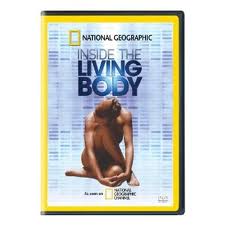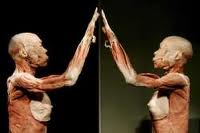A couple weeks back I started a class called “Pathology” as part of my massage program. The first class we watched a DVD from National Geographic titled “Inside the Living Body,” and were asked to write a paper with the loose guidelines of “what did you think of the video and why do you think I made you watch it?”

Inside the Living Body
Inside the Living Body is a National Geographic documentary exploring the interactions of the various human systems from birth through death. Naturally, as time progresses following birth, human systems develop as both a driving factor for growth and in response to internal and external stressors. The video eloquently illustrates how individual systems (e.g. the cardiovascular system) and their associated organs (e.g. the heart) function to support life at different stages throughout the lifespan, and alludes to how the function (or dysfunction) of one system will influence others. Understanding these concepts presents a unique opportunity to recognize the symptoms of and more effectively treat individuals with various levels of dysfunction.
The further I travel down the rabbit hole of human performance, the more I appreciate how interactive the various systems are. One cannot influence the “muscular system”, “cardiovascular system”, or “endocrine system” in isolation. In fact, a stimulus in any of these areas will likely also involve a concomitant stimulus to the rest of the systems, but will absolutely create indirect effects as a result of the primary system stress. For example, lifting weights is traditionally thought of as a stimulus to the muscular system. However, overcoming high levels of resistance stimulates the sympathetic nervous system, which directly influences the cardiovascular system through changes in heart rate and blood pressure, the respiratory system through changes in breathing rate, and the endocrine system via the release of hormones like norepinephrine. These are somewhat isolated examples pulled from the immediate cascade of events that result simply from getting under a heavy bar. These examples are confounded by the present state of the individual’s systems, and compounded upon by the ensuing cascade of allostatic events designed to restore homeostasis.
The idea of an individual’s “state” influencing their ability to grow and adapt to various stimuli has implications for all of the body’s systems, but also highlights the important role nutrition plays in providing the appropriate building blocks for all involved reactions and structures. Unfortunately, nutrition is typically viewed strictly as a means of influencing body composition. The thinking, here, is that total caloric intake can be manipulated as a means of matching, or creating an excess or deficit relative to total energy expenditure in an effort to maintain, gain, or reduce weight, respectively. Recommendations have been further divided into specific intakes, either on an absolute or relative basis, of the three macronutrients: protein, carbohydrates, and dietary fat. Even within this model, which is only loosely recognized or understood on a wide scale in our country, intake of specific macronutrients (e.g. omega-3 fatty acids, amino, acids, etc.) and micronutrients (i.e. vitamins and minerals) is haphazard, and the effect of nutrient timing relative to circadian rhythms and physical activity is not fully appreciated. It is not until dietary habits are viewed for what they actually are, as provisions for the foundational building blocks of all structures within the body and energy production that nutrition practices can be truly understood, the crime of genetically modifying nature’s gifts can be fully recognized, and ultimately that our society can optimize our nutritional habits.
Appreciating and attempting to understand the totality of the influence of any individual stressor is inherently valuable, as it not only allows the clinician/practitioner to identify a client’s dysfunctions, but it provides a means of early recognition regarding deleterious lifestyle choices and sub-clinical symptoms that will inevitably snowball into more significant problems in the future. Naturally, a better understanding of the state of the client’s system will also allow for a more appropriate treatment approach. For example, an individual that presents with neck stiffness/pain while in a state of excessive sympathetic tone (e.g. as a result of work- and relationship-related stress) may be most appropriately treated using techniques that facilitate a shift toward a more parasympathetic state. In this case, aggressive manual or instrument-assisted soft-tissue work, locally or peripherally, could stimulate a fear-avoidance reaction and a further push into sympathetic dominance. Because of the integration of the nervous system and fascial networks, it’s possible that decreasing the individual’s threat response via an augmentation of parasympathetic tone would reduce or eliminate their pain.
Furthermore, understanding the integrations of the body’s systems allows the clinician to troubleshoot complicated cases. As an example, imagine an individual possessing great joint range of motion and appropriate strength across the joint with a history of chronic nagging muscle tears. Further investigation reveals that the client doesn’t drink any water. In this case, it’s possible that the client has shifted his muscles closer to injury threshold via dehydration. Clients understand that it’s easier to tear beef jerky than filet mignon, but they’re unlikely to make this connection themselves. Sometimes the key to optimal treatment lies in asking the right questions.

To your success,
Kevin Neeld
P.S. Science applied to hockey training: Ultimate Hockey Training
Please enter your first name and email below to sign up for my FREE Athletic Development and Hockey Training Newsletter!